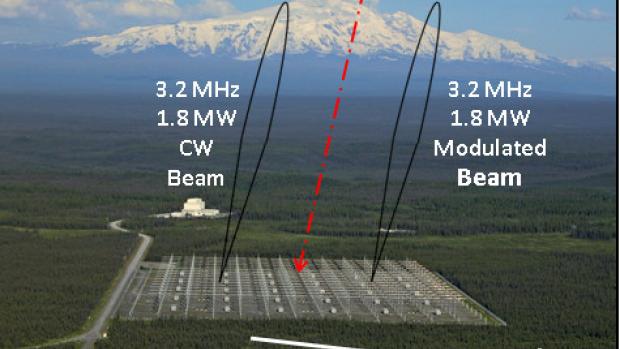Reaching into the Ionosphere to Talk to Submarines and Save Satellites

Very low frequency (VLF) waves—3 kHz to 30 kHz—have numerous practical applications. They can penetrate deep into sea water, making it possible to communicate with submarines, and can clean up anomalous doses of radiation that can disable or shorten the life of expensive satellite equipment. (Such doses can be the result of nuclear testing or of traveling through the Van Allen radiation belts, zones of magnetically trapped, charged particles surrounding the Earth.)
Establishing a ground-based VLF communication system requires a very large vertical antenna, and, as Spencer Kuo, a professor of electrical and computer engineering at the NYU Polytechnic School of Engineering, points out, there are inherent limitations on just how high such an antenna can be built and how efficient it can be. A virtual antenna, on the other hand, would not be subject to the same limitations and could even reach into the ionosphere—the layer of atmosphere that extends from about 75 to 1000 km above the planet’s surface.
To explore that possibility, Kuo traveled to Gakona, Alaska, to the world’s most advanced ionospheric research facility. Both his theory and his experimental results showed that VLF radiation is generated via a beat wave approach and that such an approach generated the VLF radiations over a larger frequency band. (Beat waves occur when two waves of very similar frequencies interfere with one another.) The success of his ionospheric virtual antenna—which can be run by a ground-based HF power source required less than 1 GW effective radiated power (ERP) in the normally operating frequency range (3 MHz to 6 MHz)—suggests potential for a reliable broadband ionospheric VLF transmitter, with practical applications for both military and civilian use.
Kuo published his work—supported by the High Frequency Active Auroral Research Program (HAARP) and by the Office of Naval Research—in Physics of Plasma in two recent articles: “Ionospheric Very Low Frequency Transmitter” and "Ionospheric Modifications in High Frequency Heating Experiments.”




